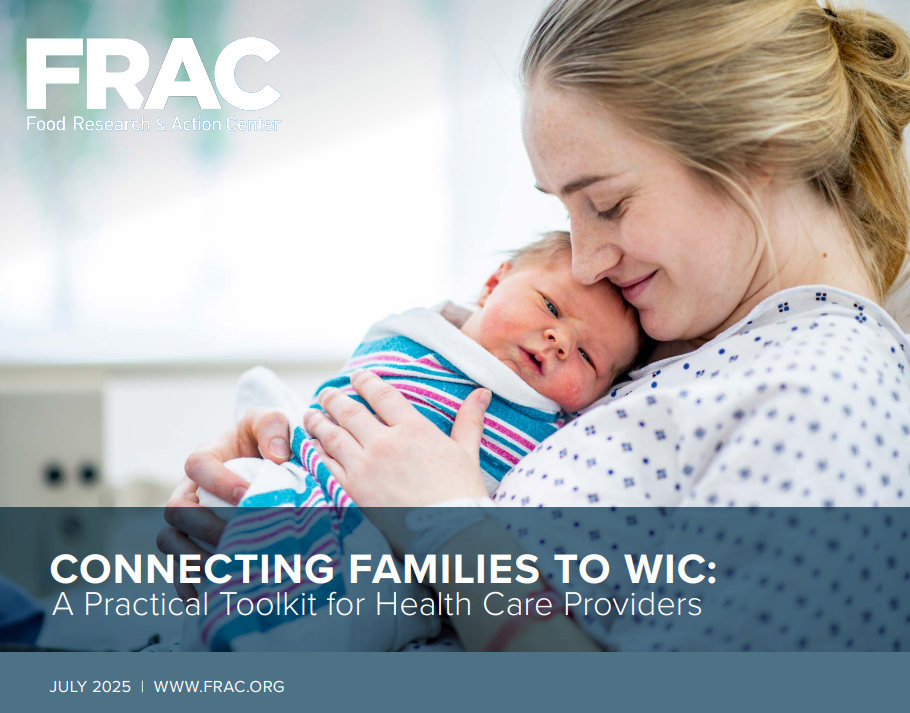By: Claire White, MS, CHES Health Promotion Coordinator
The first 5 years are crucial to a child’s development. During this time, there are many milestones for their gross and fine motor, communication, social, cognitive, and adaptive skills. However, these skills may be delayed or hindered depending on the child’s access to nutritious foods, which can have lasting implications for the rest of their lives. Evidence-based intervention methods are available through the Supplemental Nutrition Program for Women, Infants, and Children (WIC), a program designed to help support the health of women during pregnancy and postpartum, infants, and children up to 5 years old. WIC ensures women and children have access to healthy foods, nutrition education, and community resources
Although this resource is available nationally and has proven impact to support mom and baby, over 5 million eligible individuals are missing out on WIC services (USDA, 2024). To help close this gap, the Food Research & Action Center (FRAC) developed a toolkit for healthcare providers to learn how to connect families to WIC. This toolkit outlines strategies for screening and referring patients, ways to reduce stigma and barriers to the program, methods for integration into healthcare workflows, and current implementations throughout the country.
There are four key steps healthcare providers can follow to connect their patients to WIC: creating partnerships with local agencies, identifying potentially eligible patients with universal screening tools, making referrals to WIC, and following up with families every 6 months to ensure successful connections have been sustained. The toolkit encourages healthcare practices to designate a “hunger champion” who can educate not only patients but also other staff on local WIC policies and procedures – “the more people in your practice know about WIC, the more likely patients will hear the information they need about the program” (FRAC, 2025).
To bridge the gap and connect eligible patients to WIC services, several states have implemented strategies to support their patients’ needs. Some examples include:
• Vermont’s WIC developed an online referral platform to streamline the enrollment process from healthcare facility to WIC agency
• West Virginia has begun enrolling patients for WIC before discharge after the delivery of the baby
• Texas’s WIC launched a webpage aimed at educating healthcare providers about WIC;
• North Carolina utilizes their EHR systems at OBGYN clinics to automatically refer eligible patients to WIC
• New Hampshire’s WIC created a pre-application that’s available online for patients to submit and assess their eligibility.
What interventions can Florida implement to connect the dots between healthcare and WIC? Consider utilizing this toolkit at your site to reduce food insecurity further, improve birth outcomes, support healthy growth, and alleviate poverty.


